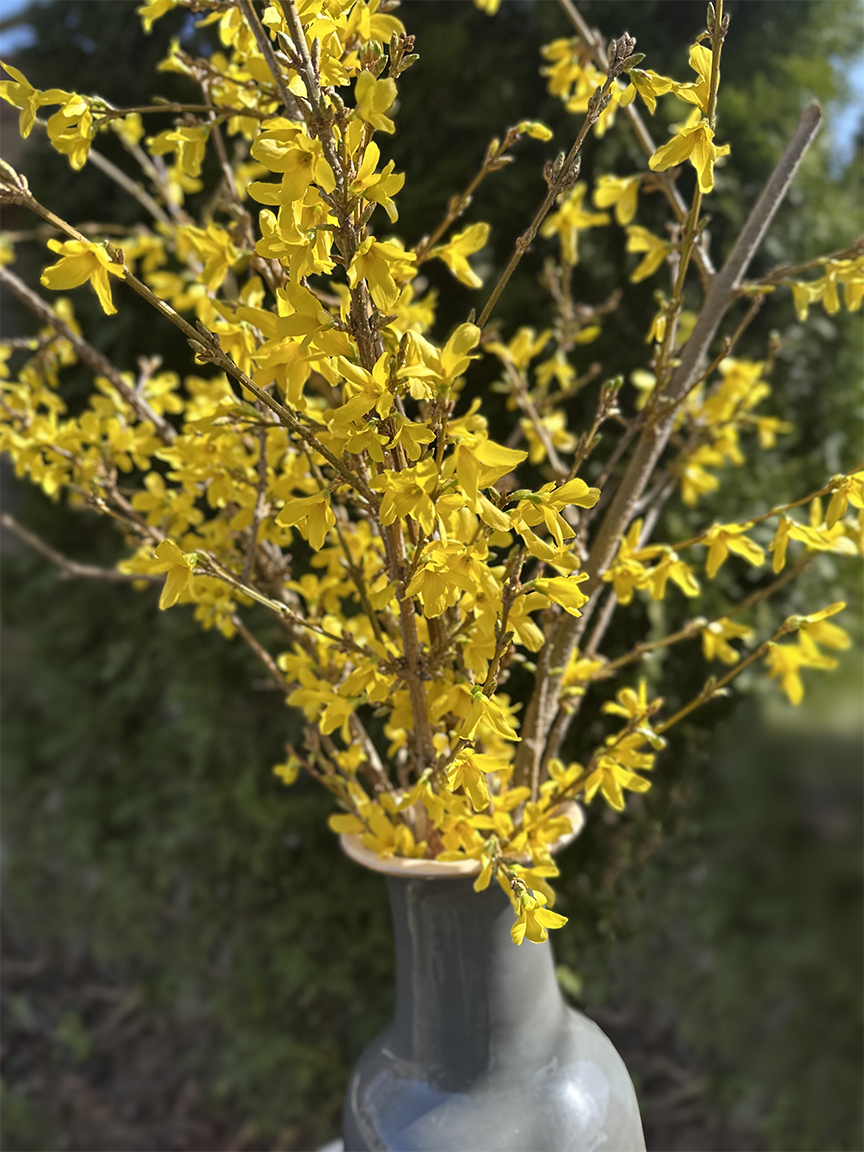

How-to
Garden Stories
Forcing Branches to Bloom Indoors

If you are longing for spring blooms as much as we are, you might like to try forcing branches to bloom indoors. Spring-flowering trees and shrubs form their flower buds in late summer or fall before the plants go dormant for the winter. The buds can be forced into bloom indoors in late winter or early spring.
In order to flower, the buds need to undergo a period of cold. Once the branches are indoors in water it may take one to four weeks for the blossoms to open, although two weeks is typical. The closer to their natural bloom time you cut the branches, the sooner they will open.
Prune branches for forcing carefully, using proper pruning techniques, and cutting off only those branches that are not essential to the plant’s basic shape. On a day above freezing, cut branches at least 1 foot long that have plenty of flower buds. Flower buds are usually larger and more plump than leaf buds.
If you are pruning branches just for forcing, try to choose branches from more dense areas of the plant and cut them evenly around the plant, as you will be removing some of its natural spring display. Be careful not to disfigure the tree or shrub. Cut a few more branches than you expect to use, because some may not absorb water properly.

Place cut branches in a container of warm water. Then, while holding each stem underwater, make a fresh cut 1 inch from the base. Cutting stems underwater will help prevent air from entering the stem through the cut end and blocking water uptake.
Remove any buds and twigs that will be underwater in the vase. You may want to add a floral preservative to the container water to help control bacteria.
To start, keep the branches in a cool room out of direct sunlight and change the water every other day. When color appears on the buds or the foliage begins to unfurl, arrange the branches in a vase and display them in a cool room out of direct sunlight.
Some good choices for forcing include serviceberry (Amelanchier), magnolia (Magnolia), flowering quince (Chaenomeles), forsythia (Forsythia), crabapple or apple (Malus), flowering pear (Pyrus), flowering cherry (Prunus), viburnum (Viburnum), cornelian cherry dogwood (Cornus mas), and redbud (Cercis).
Learn more about how to force branches to bloom indoors with Heather Sherwood, senior horticulturist in the English Walled Garden.

